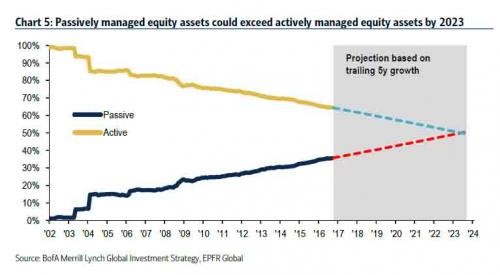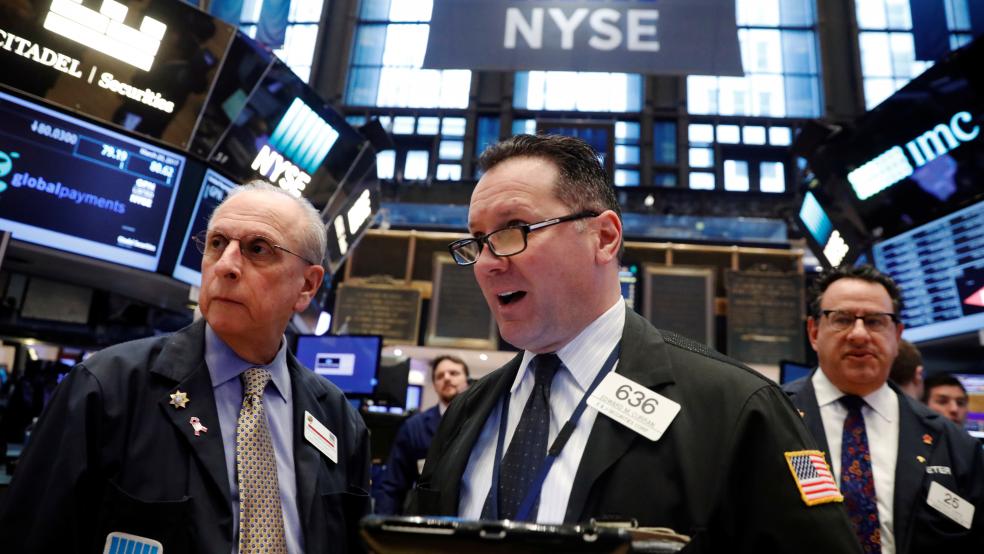Large-cap stocks haven't suffered a 1 percent decline since October, a run of well over 100 days. The last medium-scale pullback was last summer, during the short-lived "Brexit" fallout, that took the Dow Jones Industrial Average temporarily below its 50-week moving average. And the last truly frightening market pullback was in early 2016, when oil prices were careening towards the $26-a-barrel threshold and the Dow last touched its 200-week moving average.
The dichotomy couldn't be clearer: January 2016 marked the worst-ever start to the year for stocks, but so far in 2017, things could hardly be better for the major indices. And yet, Wall Street brokerages are increasingly sounding the alarm as hedge fund types bet against prices rising further from here.
On the surface, the lack of volatility is historic.
Related: This Big Washington Battle Could Hit You in the Wallet
Last Monday large-cap stocks traded in a range of just 0.25 percent, the smallest range of the year and in the bottom 0.2 percent of all days since 1970, according to LPL Financial. And there's hasn't been a daily move, up or down, of more than 1 percent for more than 60 days, a record going back more than 50 years and eclipsing the previous record of 24 days from 1995.
That's attracting inflows into stocks as investors chase the easy gains.
According to EPFR Global, global equities attracted $14.5 billion in the week ending March 15. That marked the eleventh straight week of inflows. U.S. equities enjoyed a $12 billion inflow, the most in 13 weeks.
While regular investors are loading up, large commercial hedges in the equity index futures market are going heavily short — betting big that stocks are overdue for a correction and will soon head lower. According to data compiled by SentimenTrader, these "smart money" traders have compiled a $62 billion short position, their second-largest exposure against the stock market in history.
Related: Tax Breaks Could Save U.S. Oil Industry Billions
The only time they had a larger bet against the market was last August, before the S&P 500 fell about 5 percent over the two months that followed.
At the same time, hedgers are betting that bond prices are set to rise. This is a classic "risk off" trade.
This all comes in the wake of last Wednesday's unusual market surge — unusual because it followed the announcement of another quarter-point interest rate hike from the Federal Reserve. The move represented a dramatic quickening of the policy tightening pace. After just two rate hikes over 10 years, the Fed has now raised rates twice in the last three months while promising another two hikes before the year is out.
The hike came in the context of very weak "hard" economic data (with the Atlanta Fed's real-time estimate of Q1 GDP growth at just 0.9 percent) and a growing realization that the expected pro-growth policies from the Trump administration, which generated such eager optimism, are going to be longer in coming than originally thought. In fact, it looks like the Fed just hiked into the slowest quarter of growth since the 1980s.
Related: Can Wall Street Handle Higher Interest Rates?
Yet stocks acted as if Fed Chair Janet Yellen and her cohorts had announced "almost one full cut in the federal funds rate," according to Goldman Sachs. In other words, stock trading seems to be in its own world.
Bank of America Merrill Lynch is warning that stocks are trading less on long-term fundamentals like earnings and increasingly on short-term "factor" algorithms. In other words, computers are increasingly buying stocks because, in many cases, other computers are buying.

With human traders being increasingly squeezed out of the market — with quantitative programs taking over for hotshots in suits and capital being pulled from "active" investment managers as "passive" automated funds enjoy inflows — the obvious question is: What happens when the computers all decide to sell?






